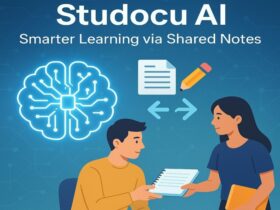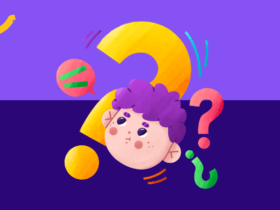In the last decade, eLearning has become a dominant force in education and training, reaching classrooms, corporate boardrooms, and personal devices worldwide.
However, while digital content continues to grow, one common issue remains: ensuring learners truly comprehend and retain the information.
That’s where audio narration comes into play.
Audio, especially when paired with visuals and text, plays a critical role in reinforcing learning.
With the increasing availability of easy-to-use tools like an AI voice generator, educators and course designers can now integrate voice narration effortlessly into their learning modules. But is narration really that powerful?
In this blog, we’ll break down how audio narration improves comprehension in eLearning, the science behind it, and how you can implement it effectively.
Why Comprehension Is a Challenge in eLearning
Traditional classroom learning comes with built-in support: teachers explain concepts, repeat key points, and adjust pace based on student reactions.
In contrast, eLearning often leaves learners to interpret content alone, which can be overwhelming.
Here are a few common challenges:
- Learners may skim or skip important sections
- Reading-only formats can lead to cognitive overload
- Visual-only learners might miss context or struggle with complex content
- ESL learners may find it difficult to absorb written text
When learners are distracted or disengaged, comprehension naturally drops, and so does retention.
That’s why it’s essential to design eLearning content that works for multiple learning styles, especially auditory ones.
The Cognitive Science Behind Audio Narration
According to the Dual-Coding Theory in cognitive psychology, humans process information through two channels, visual and auditory.
When both channels are activated, learners are more likely to:
- Understand complex concepts
- Retain information longer
- Stay engaged with the content
The Cognitive Theory of Multimedia Learning also supports this idea. It argues that:
- Learning improves when words and pictures are combined
- Narration guides attention and reduces extraneous load
- Learners benefit when information is chunked and delivered in multimodal formats
This means that adding voice to your content doesn’t just make it sound better, it makes it more effective.
Key Benefits of Audio Narration in eLearning
Let’s look at some of the specific ways audio narration enhances the learning experience.
1. Improves Focus and Reduces Distractions
Audio narration helps learners stay on track by:
- Guiding them through the course
- Reinforcing key takeaways
- Preventing them from skipping ahead too quickly
Instead of relying on self-paced reading, learners can listen to the content while absorbing visuals, leading to better focus and fewer distractions, especially on mobile devices.
2. Supports Diverse Learning Styles and Needs
Not everyone learns the same way. Some learners absorb knowledge best through sound. Audio narration supports:
- Auditory learners who remember better by hearing
- Visually impaired learners who need accessible alternatives
- Dyslexic learners who benefit from hearing text instead of reading it
When narration is added, it makes eLearning more inclusive and effective for all types of learners. Just as visual learning strategies help learners understand complex concepts through imagery, audio narration complements those visuals by adding auditory reinforcement.
3. Enhances Retention Through Repetition
Hearing information in a clear, conversational tone can boost memory retention. Learners can:
- Replay difficult sections
- Review important summaries
- Re-listen to instructions before assessments or activities
This repetition helps them internalize knowledge without rereading long paragraphs.
4. Enables Multilingual Learning Experiences
With globalization, eLearning courses are often delivered to diverse learners across languages. Voice narration can be recorded in multiple languages or generated with an AI voice generator, helping:
- Break language barriers
- Improve pronunciation guidance
- Support comprehension for ESL learners
This is especially useful in corporate training, where employees in different regions may access the same course in their native language.
5. Humanizes Digital Content
One of the major downsides of online courses is that they can feel cold or robotic. A natural-sounding narration:
- Adds personality and warmth
- Mimics a human teacher or guide
- Increases trust and emotional connection
This is where tools like Murf.ai become valuable, they allow educators to clone their own voice or select a tone that aligns with their brand, creating a more authentic learning experience.
Use Cases: Where Audio Narration Is Making a Difference
Let’s explore some real-world examples of where audio narration has improved comprehension:
Language Learning Platforms
Apps like Duolingo and Babbel use native speaker narration to help users learn pronunciation, sentence rhythm, and vocabulary usage, something reading alone can’t deliver.
K–12 Digital Textbooks
Audio-enhanced eBooks and storybooks help younger students understand narrative flow and pronunciation while following along with the text.
Corporate Training Modules
Large organizations are now embedding narration in onboarding materials, compliance courses, and safety training, improving both comprehension and completion rates.
Higher Education eLearning
Universities offering hybrid or online courses often include audio lectures or narrated slides to simulate the traditional classroom experience.
How to Add Narration with AI Tools
You no longer need to rent a recording studio or hire professional voice actors to narrate your courses. With modern AI voice tools, educators can convert any script or text into studio-quality voiceovers in minutes.
One of the most efficient tools for this is an AI voice generator.
Why Use an AI Voice Generator?
- Speed: Generate narration instantly
- Cost-effectiveness: No need for expensive recording setups
- Flexibility: Choose from multiple languages, tones, and genders
- Scalability: Update or edit narration without re-recording
This makes it incredibly easy to create:
- Narrated presentations
- Explainer videos
- Audio versions of blog content
- Multilingual versions of existing courses
Best Practices for Effective Narration
To ensure your narration is helpful, not distracting, keep these tips in mind:
- Align audio with visuals: Don’t overload learners by reading every word on screen
- Use clear, natural pacing: Avoid robotic or rushed delivery
- Chunk information: Break long narrations into smaller clips
- Match tone to audience: A casual tone may work for younger learners, while professional tone suits corporate settings
- Test and gather feedback: Share pilot versions with a small group and improve narration based on learner input
Challenges and How to Overcome Them
While audio narration offers many advantages, it’s not without its challenges.
Potential Pitfalls
- Poor-quality or robotic voices reduce learner trust
- Overuse of narration can overwhelm instead of aid
- Language or cultural mismatches may cause confusion
Solutions
- Choose a high-quality AI voice generator with human-like voices
- Script your narration intentionally, don’t just convert everything
- Offer learners the ability to pause, rewind, or mute narration as needed
With the right strategy, narration becomes an asset, not a distraction. Understanding the common eLearning challenges, like cognitive overload or lack of guidance, underscores why narration can be a powerful antidote.
Conclusion: Empowering Learners Through Audio
In a world where attention is scarce and screen fatigue is real, audio narration offers a refreshing and impactful way to improve learning outcomes. It helps learners focus better, understand more deeply, and retain knowledge longer.
Whether you’re an educator, course creator, or EdTech startup, adding voice to your content is no longer optional, it’s essential. Before investing in new platforms, educators can practice effective use of EdTech tools like AI narration to enhance learning without adding cost.
And thanks to modern tools like an AI voice generator, you don’t need technical skills or a big budget to make it happen. You just need a script, a voice, and the desire to make learning more human, accessible, and effective.
Because in eLearning, what learners hear can be just as powerful as what they see.












































Leave a Reply